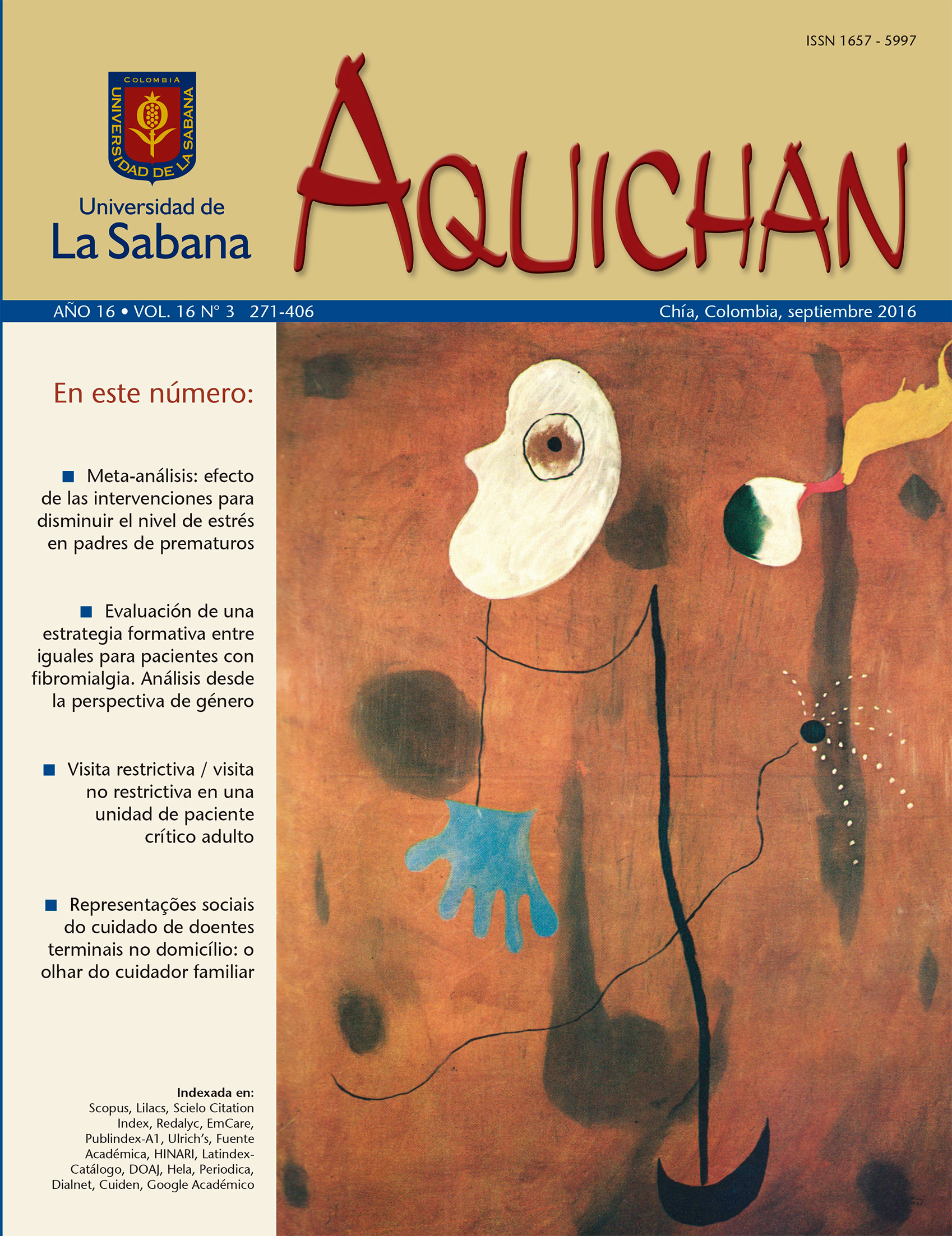Social Representations of In-Home Caregivers of Terminally Ill Patients: The Family Caregiver’s Point of View
Keywords:
Home Health Care. Caregivers, Life Changing Events, Nursing, Oncology Nursing. (Source, DeCS, BIREME).Abstract
Objective: To learn about the social representations of home care by family caregivers of terminally ill patients. Method: Qualitativestudy with eleven family caregivers of terminally ill patients, registered in the home care service of a teaching hospital in southern Brazil.The researchers conducted narrative interviews and used the content analysis method to analyze them. Four categories were established:male and female caregivers, a different perspective; role reversal and changes in care; experiences as a source of knowledge for homecare; and healthcare challenges. Results: Representations by male caregivers differ from those of female caregivers because care alsoincludes the context. Male caregivers do not associate distress to excessive burden but to the fear of losing someone. Other representationsrefer to the impossibility of choice to assume the role of caregiver and to role reversal, which causes patients to be submissivewith the caregiver. Conclusion: The research revealed how family caregivers construct meanings and how they interpret the home careprovided through the home care program. Particular attention is given to the role of healthcare professionals in guiding family caregivers.Downloads
Download data is not yet available.
Published
2016-03-28
How to Cite
Oliveira, S. G., Quintana, A. M., Denardin-Budó, M. de L., Luce-Kruse, M. H., Garcia, R. P., Wünsh, S., & Sartor, S. F. (2016). Social Representations of In-Home Caregivers of Terminally Ill Patients: The Family Caregiver’s Point of View. Aquichan, 16(3), 369. Retrieved from https://aquichan.unisabana.edu.co/index.php/aquichan/article/view/359
Issue
Section
Articles
License
1. Proposed Policy for Journals That Offer Open Access
Authors who publish with this journal agree to the following terms:
- The journal and its papers are published with the Creative Commons License Attribution-NonCommercial-NoDerivatives 4.0 International (CC BY-NC-ND 4.0). You are free to share copy and redistribute the material in any medium or format if you: give appropriate credit, provide a link to the license, and indicate if changes were made; don’t use our material for commercial purposes; don’t remix, transform, or build upon the material.





